NPS Website; Local Website
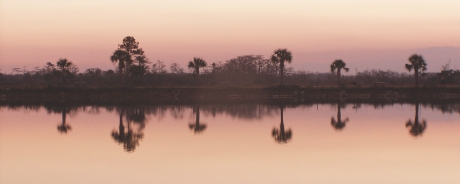 WHAT IS IT?
WHAT IS IT?729,000 acres consisting primarily of cypress forests. This large expanse of land serves as a watershed to the Everglades National Park that borders Big Cypress to the south.
BEAUTY (7/10)
The wild beauty of lurking American alligators dominates the Park’s murky canal water. These magnificent ancient beasts are everywhere. The surrounding bald cypress forests teem with sunning anhinga and every native North American wading bird. Even the wretchedly ugly and endangered wood stork soars above. The wet prairie landscapes are uneventful but therapeutically calming after time spent driving through Miami.
HISTORICAL INTEREST (4/10)
Big Cypress swamp’s primary role, both ecologically and as a National Park Unit is to be an unspoiled source of water into the Everglades. It was designated a Park Unit in 1974 shortly after an explosion of land development, oil speculation and economic exploitation severely threatened Big Cypress and in return, the health of the Everglades.
Since then, the Park has been the main location of the Florida Panther’s rise from near extinction. Dozens of Panthers now roam the Preserve.
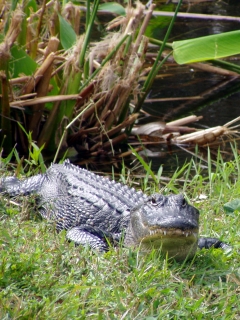 CROWDS (8/10)
CROWDS (8/10)We always feel giddy while driving on the Tamiami Trail through the Preserve. Anglers and giggly tourists line the canal. Gators and wading birds are everywhere. There is a constant air of enjoyment. Nearly everyone driving the route stops at the Visitor Center asks questions about wildlife and wonders about the mysterious Florida Panther. We found the VC as crowded as any park we have been to.
The nearby Monument Lake campground, however, was not crowded at all, amazing given that the nearby Collier-Seminole State Park campground was full and cramped to Andersonville-esque proportions. We had a lovely time at Monument Lake. Campsites along a paved road circle a modestly sized, gator-infested lake. Once the sun starts sinking, the entire campground starts walking around the road, which at this point resembles a giant running track. Smiles and light conversation abound. This was the most pleasant and friendliest campground yet.
EASE OF USE/ACCESS (4/5)
The Park is simultaneously very accessible and uniquely prohibitive. South Florida’s two primary east-west routes pass through Big Cypress N PRES.
Interstate 75 (a/k/a the Everglades Parkway c/k/a Alligator Alley) passes through the Park’s northern section but offers no access to the Preserve. It is a toll road, no exits are allowed and tall barbed wire fences prevent any spur of the moment excursions.
If you want to enter the Park, you must take the southern route, U.S. 41 (a/k/a the Tamiami Trail). The Visitor Center stands at the road’s halfway point, 50 miles east of Naples and 50 miles west of Miami. You can hike the Florida Trail from the VC to both the north and south. Ask ahead about how much water covers the Trail.
The Tamiami Canal parallels the two-lane Tamiami Trail through the length of the Park. The Canal provides visitors with constant bird watching, fishing and alligator spotting. A few unpaved roads provide access to more remote section of the Preserve. ORV use is allowed in parts and is the primary vehicle used for people who choose to hunt in the Park.
CONCESSIONS/BOOKSTORE (3/5)
Conveniently separated into three main shelves: flora, fauna and history and children’s. Birders and those in search of wildlife get primary attention here. Big Cypress knows its audience. Also among the selection are River of Grass and Voice of the River, tributes to Florida’s wilderness written by Marjory Stoneman Douglas
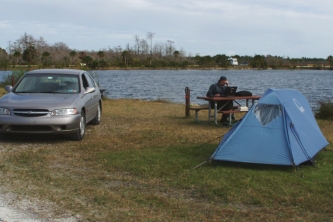 COSTS (4/5)
COSTS (4/5)The Site is free.
Sites at the lovely Monument Lake campsite cost $16 per night. The campground is 8 miles west of the Visitor Center and only a few hundred yards north of the Tamiami Trail.
RANGER/GUIDE TO TOURIST RATIO (4/5)
During our half dozen or so trips into the Visitor Center, there have always been at least two volunteers and one Ranger on duty. Often two and even three Rangers have been there to help out and answer questions. The most interesting staff member posted behind the desk was a firefighter taking a break from administering prescribed burns at the Park.
Once, while we were stamping our National Park Passport Book, a staff member saw a Jimmy Carter NHS stamp and asked about that Site. We told the person how wonderful the Site was and how much respect we had for the President. Their response was, “well, I’m not supposed to tell you this but everyone seems to know anyway.” “What could it be,” we imagined. “President Carter is here today. He’s just a mile down the road at Clyde Butcher’s Gallery on vacation.” “Thanks.” we said as we rushed down the Tamiami Trail hoping to catch our second glimpse of Jimmy in two weeks. But it was not to be. He was in the back having lunch. We asked the Secret Servicemen to tell the President how much we enjoyed his Sunday school lesson two weeks ago. We are sure they obliged.
TOURS/CLASSES (5/10)
We enjoyed the 15-minute introductory video shown at the Visitor Center. The film packs a strong educational punch even though it must have been made just a short time after the Park’s opening in 1974. Charts explain the watershed and short clips identify many of the Site’s wildlife. The film tells you what you will see and shows you things you are hoping to see. Michael heard loud gasps from everyone in the theater, even his wife, when the legendary ghost orchid appeared on screen. Who knew it was such a big deal?
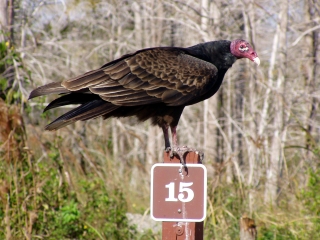 We have found that many of the older films, Big Cypress’ included, focus on educating the public. The newer films tend to be fancy public relations-oriented pieces short on information and long on pretty pictures.
We have found that many of the older films, Big Cypress’ included, focus on educating the public. The newer films tend to be fancy public relations-oriented pieces short on information and long on pretty pictures.While the older films stand the test of time, the older museum exhibits do not. Big Cypress is no exception. The Museum displays are woefully inadequate given the large amounts of tourists the Park receives. We had little room to move. The centerpiece display is a stuffed Florida Panther that was tragically killed along the Tamiami Trail by a speeding car.
Rangers give sporadic talks and walks during the season. Here is the winter schedule. The crowds at Big Cypress N PRES are mostly transient spur of the moment visitors. The Park is not a destination Site, more of a place to break up the drive from Miami to Naples. The lack of Ranger activities is not surprising.
FUN (9/10)
The drive through Big Cypress on the Tamiami Trail is one of our favorite things about Florida. Where else does a major highway take you straight through otherwise untouchable swamps and forests? Driving through Big Cypress NPRES reminds you that despite all the development and expanding civilization, at its heart, Florida is totally wild.
When we came to Florida a few years ago for a cousin’s wedding, we took this drive almost every day. We couldn’t stay away. Little has changed this time around.
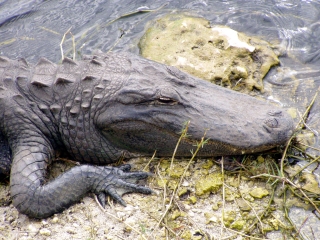 WOULD WE RECOMMEND? (9/10)
WOULD WE RECOMMEND? (9/10)It is the middle of winter and gators and green vegetation are everywhere basking in the sun, as are we. Do you really need convincing? When you do come, be sure to drop into Clyde Butcher’s Photo Gallery and Shop located just a mile east of the Visitor Center. Known as the “Ansel Adams of the Swamp”, his black and white photos perfectly capture the many moods of south Florida’s wilderness. You will be following in the footsteps of a Nobel Peace Prize winner.
TOTAL 57/80
www.usa-c2c.com
© 2004-06